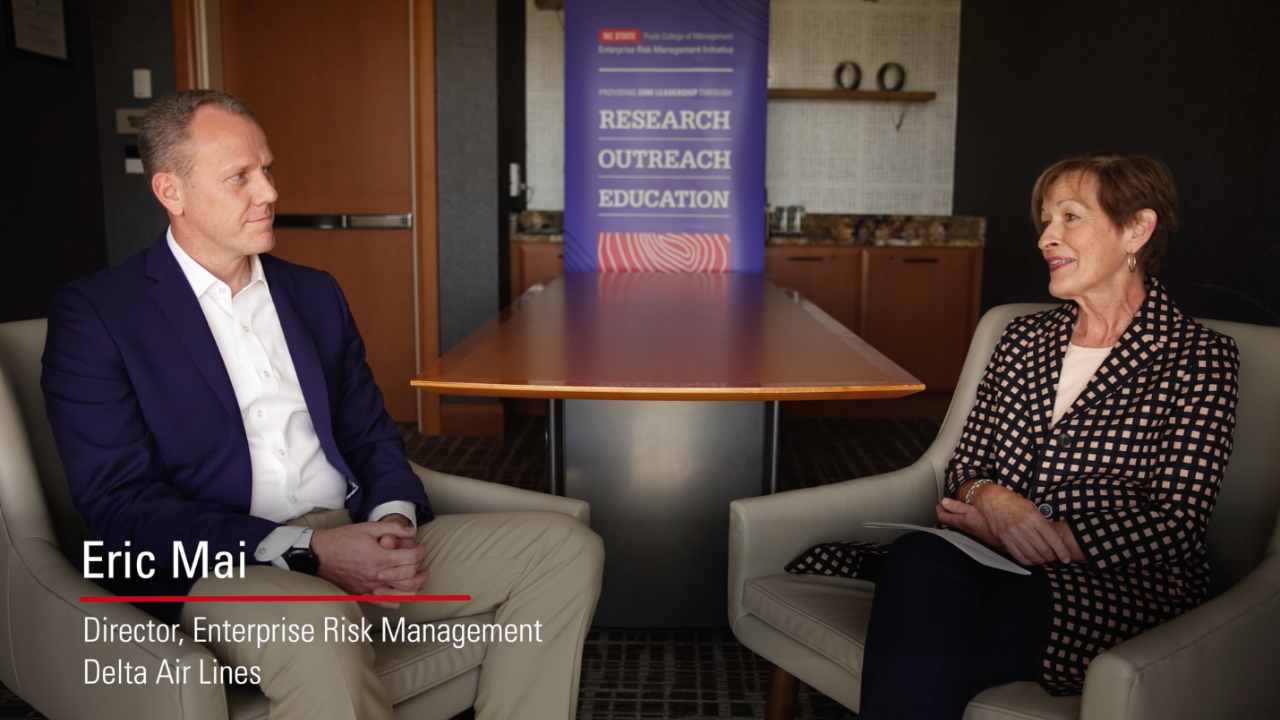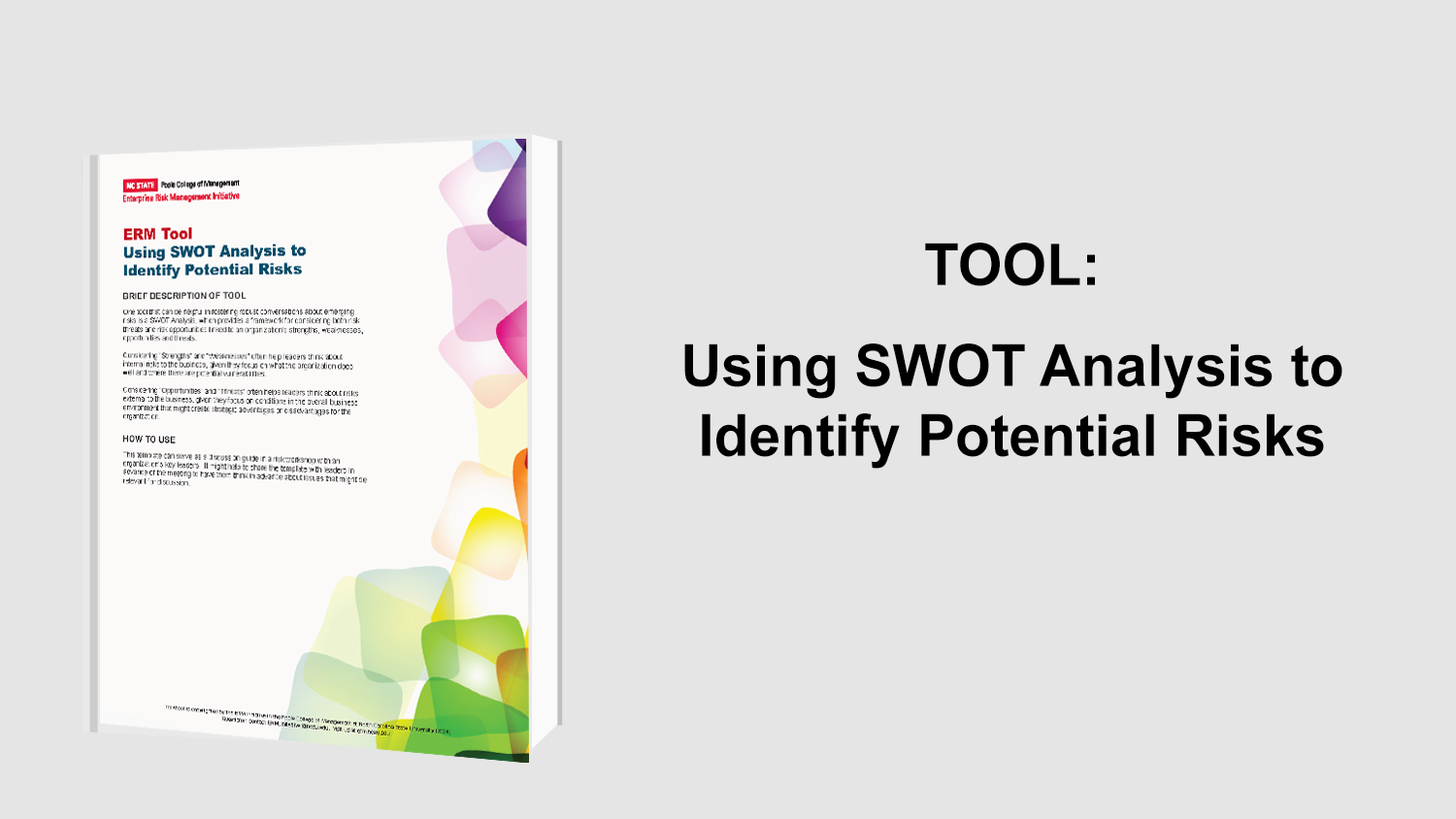Eric Mai, director of Enterprise Risk Management at Delta Air Lines, recently spoke with NC State Professor of Practice Bonnie Hancock about how enterprise risk management has evolved over the past few years at Delta Air Lines — and where the ERM strategy is headed.
More than 90,000 Delta employees are responsible to ensure 4,000 flights daily reach more than 275 destinations on six continents.
This conversation touches on:
- How Delta approached rebuilding its ERM program in 2019.
- How the major global corporation relied on a strong governance structure and effective executive communication to weather the Covid pandemic.
- What Delta’s ERM executive sees on the horizon for the role of ERM.
A focus on the foundation: Giving ERM a fresh look.
Delta began rebuilding its Enterprise Risk Management program. They used the opportunity to focus on “developing a program and methodology… and build out listening systems all structured within the umbrella of governance.”
- The ERM team engaged with their leadership team, stakeholders and risk owners to understand their current risk situation and progress.
- The team could then build an ERM program that was “Delta fit” to serve the needs of the corporation and its various stakeholders.
Covid crisis response: Stabilize and prepare for recovery.
“By human nature, when a crisis happens, we tend to focus on the here and now in the immediate term. And we needed to do that to focus on protecting people — our employee base and our customers. We needed to focus on stabilizing the organization, but also doing so with a level of care so that we were in a position to recover on the other side of the pandemic.”
A significant factor in Delta’s ability to effectively move through the crisis was a strong governance structure and effective executive and board communication.
- A chief legal officer chairs the governance structure.
- An executive-level risk committee that meets quarterly.
- A monthly working committee supports the executive-level group.
- The team reports to the audit committee on an annual basis, which is supported by a risk assessment process conducted twice a year.
This decentralized ERM structure allows for Delta to interact and integrate with other risk elements within Delta.
The next evolution of ERM: strengthening the integration of ERM and strategy.
“I think the reason for ERM is very known… you know why we need to integrate risk and strategy together.” But, Mai says, “the how” to integrate ERM and strategy is where Delta is now focusing.
“How we think and how we operate and how we design a strategy… and then how we execute.”
A few priorities for Mai and Delta:
- Creating a quantifiable metric that can be used to effectively track qualitative risk information.
- Making information more meaningful for stakeholders, including executive and board leadership.
- Tying ESG into the broad governance structure.
Interested in this topic?
You may also like this article, Integrating ERM and Strategy, featuring video insights from Yvette Connor, Principal and Risk Advisory, National Strategic and Enterprise Risk Practice Leader with Grant Thornton, LLP.



